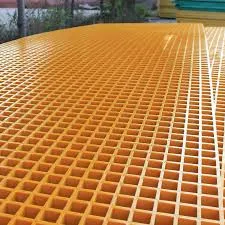
-
 Afrikaans
Afrikaans -
 Albanian
Albanian -
 Amharic
Amharic -
 Arabic
Arabic -
 Armenian
Armenian -
 Azerbaijani
Azerbaijani -
 Basque
Basque -
 Belarusian
Belarusian -
 Bengali
Bengali -
 Bosnian
Bosnian -
 Bulgarian
Bulgarian -
 Catalan
Catalan -
 Cebuano
Cebuano -
 China
China -
 China (Taiwan)
China (Taiwan) -
 Corsican
Corsican -
 Croatian
Croatian -
 Czech
Czech -
 Danish
Danish -
 Dutch
Dutch -
 English
English -
 Esperanto
Esperanto -
 Estonian
Estonian -
 Finnish
Finnish -
 French
French -
 Frisian
Frisian -
 Galician
Galician -
 Georgian
Georgian -
 German
German -
 Greek
Greek -
 Gujarati
Gujarati -
 Haitian Creole
Haitian Creole -
 hausa
hausa -
 hawaiian
hawaiian -
 Hebrew
Hebrew -
 Hindi
Hindi -
 Miao
Miao -
 Hungarian
Hungarian -
 Icelandic
Icelandic -
 igbo
igbo -
 Indonesian
Indonesian -
 irish
irish -
 Italian
Italian -
 Japanese
Japanese -
 Javanese
Javanese -
 Kannada
Kannada -
 kazakh
kazakh -
 Khmer
Khmer -
 Rwandese
Rwandese -
 Korean
Korean -
 Kurdish
Kurdish -
 Kyrgyz
Kyrgyz -
 Lao
Lao -
 Latin
Latin -
 Latvian
Latvian -
 Lithuanian
Lithuanian -
 Luxembourgish
Luxembourgish -
 Macedonian
Macedonian -
 Malgashi
Malgashi -
 Malay
Malay -
 Malayalam
Malayalam -
 Maltese
Maltese -
 Maori
Maori -
 Marathi
Marathi -
 Mongolian
Mongolian -
 Myanmar
Myanmar -
 Nepali
Nepali -
 Norwegian
Norwegian -
 Norwegian
Norwegian -
 Occitan
Occitan -
 Pashto
Pashto -
 Persian
Persian -
 Polish
Polish -
 Portuguese
Portuguese -
 Punjabi
Punjabi -
 Romanian
Romanian -
 Russian
Russian -
 Samoan
Samoan -
 Scottish Gaelic
Scottish Gaelic -
 Serbian
Serbian -
 Sesotho
Sesotho -
 Shona
Shona -
 Sindhi
Sindhi -
 Sinhala
Sinhala -
 Slovak
Slovak -
 Slovenian
Slovenian -
 Somali
Somali -
 Spanish
Spanish -
 Sundanese
Sundanese -
 Swahili
Swahili -
 Swedish
Swedish -
 Tagalog
Tagalog -
 Tajik
Tajik -
 Tamil
Tamil -
 Tatar
Tatar -
 Telugu
Telugu -
 Thai
Thai -
 Turkish
Turkish -
 Turkmen
Turkmen -
 Ukrainian
Ukrainian -
 Urdu
Urdu -
 Uighur
Uighur -
 Uzbek
Uzbek -
 Vietnamese
Vietnamese -
 Welsh
Welsh -
 Bantu
Bantu -
 Yiddish
Yiddish -
 Yoruba
Yoruba -
 Zulu
Zulu
Understanding the Corrosion Resistance of Fiberglass Ducts in Various Environments
The Corrosion Resistance of Fiberglass Duct Systems
Corrosion is one of the primary concerns in industrial and commercial settings, particularly where ventilation and duct systems are involved. Traditional materials like metal ducts often succumb to rust, corrosion, and degradation over time, leading to costly repairs and compromised air quality. This is where fiberglass ducts come into play, offering a robust solution that effectively addresses these challenges.
Understanding Fiberglass Ducts
Fiberglass ducts are made from a composite material consisting of glass fibers and resin, which allows them to boast various desirable properties. Their lightweight design, combined with high tensile strength, makes them an excellent alternative to conventional metal ducts. What truly sets fiberglass ducts apart, however, is their superior resistance to corrosion.
Corrosion Resistance Mechanisms
The inherent properties of fiberglass grant it remarkable immunity to corrosive agents. Unlike metals, fiberglass does not rust when exposed to moisture, which is often a significant problem in duct systems. The resin used in fiberglass construction can also be specifically formulated to withstand harsh chemicals and environmental conditions, which makes these ducts suitable for a range of industrial applications—from chemical processing plants to wastewater treatment facilities.
The non-metallic nature of fiberglass means that it is less reactive with acids, alkalis, and other corrosive substances. In environments where chemical exposure is commonplace, fiberglass ducts are less likely to deteriorate, ensuring that the integrity of the duct system is maintained over time. This resilience not only extends the lifespan of the ducts but also minimizes the need for regular inspections and replacements, contributing to overall cost savings.
Thermal Performance and Insulation
fiberglass duct corrosion resistance

In addition to corrosion resistance, fiberglass ducts offer significant thermal advantages. Proper insulation is crucial in duct systems to maintain efficiency and encourage effective airflow. Fiberglass ducts are known for their excellent thermal insulation properties, which help to reduce energy losses. By minimizing temperature fluctuations, these ducts contribute to stable operating environments, further enhancing the overall efficiency of HVAC systems.
This thermal efficiency, paired with its corrosion resistance, makes fiberglass an ideal choice for buildings located in coastal areas where salty air can accelerate the corrosion of traditional duct materials. The ability to withstand extreme conditions while maintaining functionality means that fiberglass ducts can be relied upon to perform without compromise.
Environmental Benefits
The use of fiberglass ducts also has environmental advantages. Many manufacturers offer eco-friendly fiberglass options, utilizing recycled glass fibers in their production. By choosing fiberglass duct systems, industries can align themselves with sustainability goals, reducing their overall environmental impact.
Additionally, the longevity and durability of fiberglass ducts mean that there is less waste generated from frequent replacements typical with metal ducts. Fewer materials ending up in landfills and reduced maintenance requirements result in a more sustainable approach to construction and facility management.
Conclusion
In conclusion, fiberglass ducts provide an innovative solution to the persistent problem of corrosion in duct systems. Their resistance to rust and degradation from both moisture and chemical exposure positions them as a superior alternative to traditional metal ducts. The combination of lightweight properties, thermal efficiency, and sustainable manufacturing options further enhances their appeal in various applications.
Whether in residential, commercial, or industrial settings, the adoption of fiberglass duct systems can lead to improved efficiency, reduced maintenance costs, and a longer service life. As industries continue to seek ways to minimize expenses and maximize performance, the advantages of fiberglass duct systems make them an increasingly popular choice, paving the way for safer, greener, and more durable ventilation solutions.









